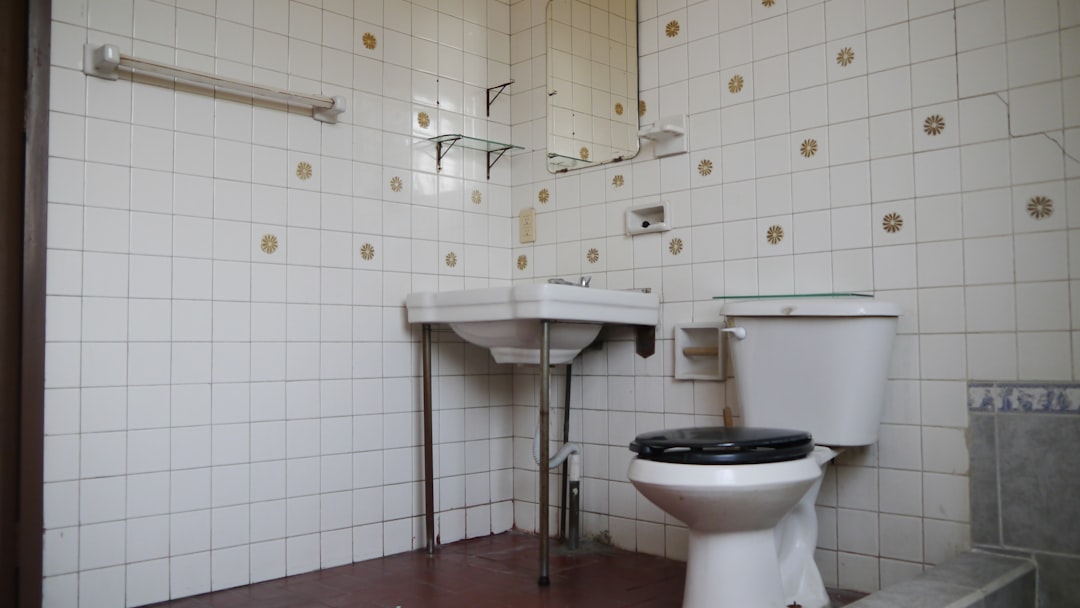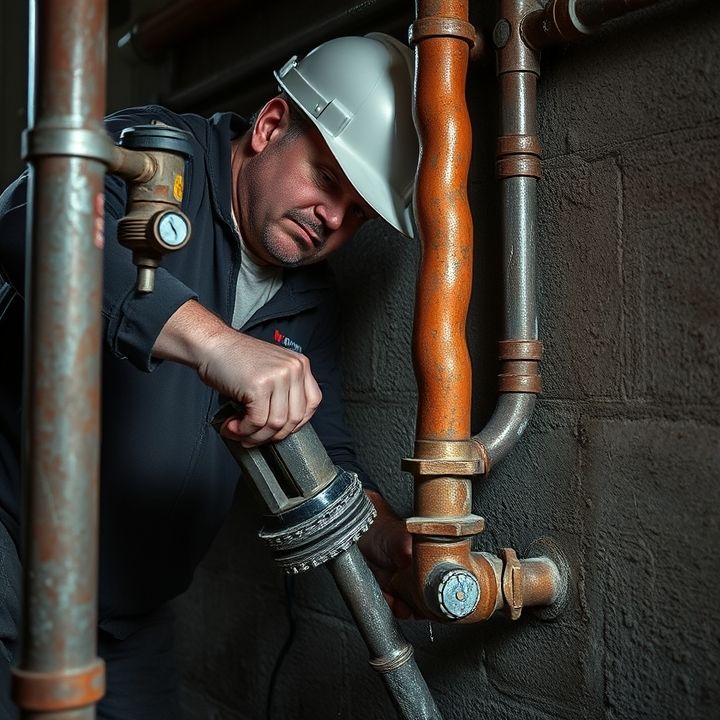Table of Contents
- Introduction
- Overview of plumbing training programs and their duration
- Factors affecting training time for plumbers
- Types of plumbing certifications and licenses
- Breakdown of on-the-job training requirements
- The role of apprenticeships in plumbing education
- Estimated time to become a certified plumber
- Continuing education and training opportunities
- Comparison of plumbing training across different regions
- Conclusion
- Frequently Asked Questions
Introduction
Have you ever wondered what it takes to don the blue uniform of a plumber? The journey to becoming a skilled plumber can be both intriguing and nuanced, filled with technical know-how and hands-on experience. As homes and businesses constantly rely on intricate plumbing systems, the demand for certified professionals has surged.
This article delves into the timeline of becoming a plumber, revealing just how many months or years you might need to invest to unlock this rewarding career. From apprenticeships to licensing exams, and all the training in between, we will guide you through each essential step of the certification process. Whether you are drawn by the promise of job stability, a love for problem-solving, or the thrill of working with your hands, understanding this path is crucial.
So, roll up your sleeves and prepare for a journey that explores the true countdown to certification!
Overview of plumbing training programs and their duration
Plumbing training programs typically vary in duration depending on the level of education and type of certification pursued. Generally, aspiring plumbers start their journey by enrolling in a vocational or technical school, which offers programs that last between six months to two years. During this time, students learn essential skills, including pipe fitting, drainage systems, and installation techniques. Hands-on training is often a significant part of the curriculum, allowing students to gain practical experience.
In addition to formal education, many plumbers complete apprenticeships, which usually last about four to five years. These programs combine on-the-job training with classroom instruction, enabling trainees to learn from experienced professionals in the field while earning wages.
Ultimately, the time it takes to become a fully qualified plumber can range from a few months to several years, depending on the chosen path and the requirements of specific regions or states. It is crucial for aspiring plumbers to research their local regulations to understand the necessary steps and time commitment involved in this rewarding profession.
Factors affecting training time for plumbers
Several factors can influence the duration of training to become a plumber. One key element is the type of training program chosen. For instance, community colleges may offer diploma programs that span from six months to two years, while apprenticeships usually last anywhere from four to five years, combining on-the-job training with classroom instruction.
Another important factor is the individual’s previous experience and skill set. Someone with a background in construction or a related field may find that they can complete their training more quickly than someone starting from scratch.
The regulatory requirements in different regions also play a significant role. Some states or countries may have specific licensing requirements that necessitate additional training time.
Lastly, the availability of apprenticeship placements can affect how long it takes to train, as these positions can be competitive and may result in varying wait times. Considering these factors can provide a clearer picture of the path ahead for aspiring plumbers.
Types of plumbing certifications and licenses
Plumbing certifications and licenses are essential for professionals in the plumbing industry, ensuring they are qualified to perform various tasks safely and effectively. There are several types of certifications, which can vary by region but generally include:
1. Apprentice License: This is often the first step for individuals starting in the plumbing field. It allows them to work under the supervision of a licensed plumber while they gain hands-on experience and complete required coursework.
2. Journeyman License: After completing an apprenticeship program and passing a specific exam, plumbers can obtain a journeyman license. This designation indicates a higher level of experience and enables the individual to work independently.
3. Master Plumber License: This is the highest level of plumbing certification. Master plumbers have extensive experience and knowledge in the field, often overseeing apprentices and journeymen. They may also be responsible for managing plumbing businesses.
4. Specialty Certifications: In addition to general plumbing licenses, there are specialty certifications available for areas such as gas line installation, backflow prevention, and hazardous waste management. These allow plumbers to expand their skill set and offer more services.
Breakdown of on-the-job training requirements
On-the-job training is a crucial component of a plumber’s education, providing practical experience and real-world skills essential for success in the field. Typically, this training is part of an apprenticeship program, which usually lasts between four to five years. During this time, apprentices work under the supervision of licensed plumbers, gaining hands-on experience in various plumbing tasks.
This on-the-job training includes, but is not limited to, learning how to install and repair pipes, fixtures, and appliances, as well as understanding plumbing codes and regulations. Apprentices also receive training in reading blueprints, diagnosing plumbing issues, and practicing safety procedures. In addition to technical skills, apprentices develop problem-solving abilities and customer service skills that are integral to their future careers.
As apprentices progress through their training, they may take on more complex tasks, allowing them to build confidence and competence. Successful completion of on-the-job training, combined with classroom instruction, equips aspiring plumbers with the knowledge and experience needed to earn their licenses and thrive in the industry.
The role of apprenticeships in plumbing education
Apprenticeships play a crucial role in plumbing education by providing hands-on experience and practical skills that are essential for becoming a successful plumber. Typically, plumbing apprenticeships combine classroom instruction with on-the-job training, allowing learners to apply theoretical knowledge in real-world situations. This dual approach not only helps apprentices grasp the technical aspects of plumbing but also teaches them about workplace safety, customer service, and problem-solving.
During an apprenticeship, which can last anywhere from two to five years, apprentices work under the supervision of experienced plumbers. This mentorship is invaluable, as it exposes them to various plumbing systems, tools, and techniques. Additionally, apprenticeships often cover essential topics such as local building codes, plumbing regulations, and the installation and maintenance of different types of plumbing systems. Because plumbers are essential for maintaining public health and safety, the comprehensive training provided through apprenticeships ensures that they are well-prepared to meet industry demands.
Estimated time to become a certified plumber
Becoming a certified plumber typically requires a combination of education, training, and hands-on experience. Generally, individuals start by enrolling in a plumbing program, which can take anywhere from 6 months to 2 years, depending on whether they pursue a certificate, diploma, or degree. Most aspiring plumbers also enter an apprenticeship program, which can last between 2 to 5 years. During this time, apprentices work under the supervision of experienced plumbers, gaining practical skills while also receiving classroom instruction.
Ultimately, the total estimated time to become a fully certified plumber ranges from about 2.5 to 7 years. This timeline varies significantly based on individual paths, the specific requirements of the state or country, and how quickly the trainee completes their apprenticeship. Additionally, ongoing education may be necessary to maintain certification and stay updated on industry standards and plumbing technologies. Thus, while a career in plumbing can begin relatively quickly, achieving certification and mastery is a considerable time investment.
Continuing education and training opportunities
Continuing education is a vital aspect of a plumbing career, enabling professionals to stay updated on the latest techniques, tools, and regulations within the industry. Many trade schools, community colleges, and professional organizations offer a variety of courses designed for active plumbers looking to enhance their skills. These training opportunities encompass a wide range of topics, from advanced plumbing systems and green technology to specialized fields such as HVAC and plumbing inspections.
In addition, many states require plumbers to complete continuing education courses to maintain their licenses. These requirements not only help ensure that plumbers are aware of any changes in building codes and safety regulations, but they also promote best practices within the profession.
Furthermore, attending workshops, seminars, and trade shows can provide plumbers with networking opportunities, access to new products, and insights into industry trends. Overall, the commitment to ongoing learning can significantly enhance a plumber’s expertise and career prospects, ensuring they remain competitive in a dynamic job market.
Comparison of plumbing training across different regions
The duration and structure of plumbing training can vary significantly across different regions, reflecting local regulations and industry standards. In the United States, aspiring plumbers often undergo a combination of classroom instruction and hands-on training through apprenticeships, typically lasting four to five years. During this period, trainees learn essential skills while working under the guidance of experienced plumbers.
In contrast, the UK offers a more varied approach, with options such as NVQ (National Vocational Qualification) courses that can take anywhere from one to two years to complete. These programs focus heavily on practical skills and may require candidates to complete specific assessments to achieve certification.
In Australia, plumbing training generally involves a 4-year apprenticeship where students balance work and study at vocational education institutions. This hands-on experience is essential for certification and ensures that trainees are well-prepared for the diverse challenges they will face in their careers.
Understanding these differences is crucial for prospective students weighing their options and mapping out their futures in the plumbing trade.
Conclusion
In conclusion, the journey to becoming a certified plumber is a significant investment of time and effort, typically ranging from 2.5 to 7 years when considering education, apprenticeships, and continuing education. Aspiring plumbers must navigate a variety of factors, including local regulations, the type of training programs available, and personal circumstances. However, this dedication culminates in a rewarding career with opportunities for growth and specialization. With the right training and experience, individuals can excel in this essential trade, ensuring public health and safety through their expertise.
If you’re looking for plumbing assistance or have questions about the certification process, don’t hesitate to call 573-555-2121. Our team is ready to help guide you on your plumbing journey!

